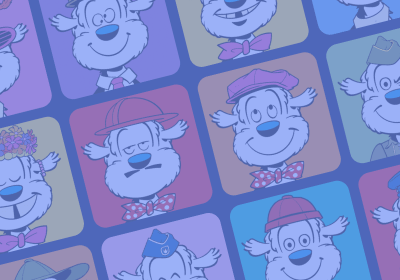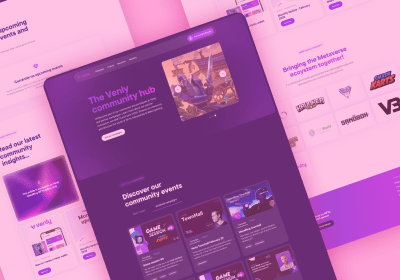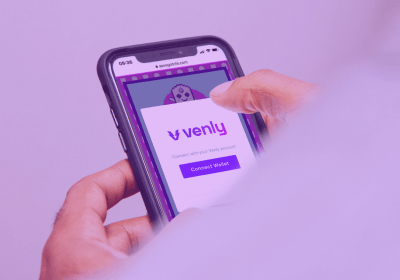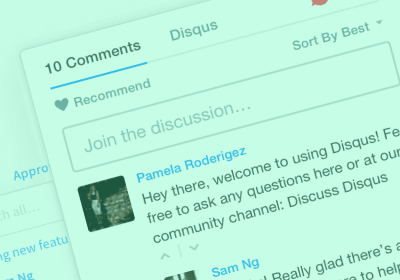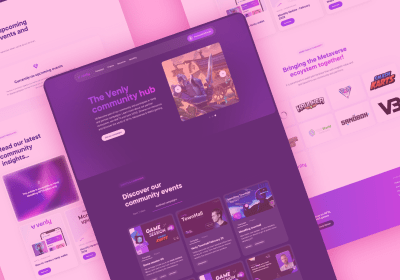
Has Web Design In The Cloud Now Made Conversations Obsolete?

As no-code web design shifts to more shared systems in the cloud, technology seems to be replacing in-person conversations and meetings.

Modern life has changed how we communicate in many ways. If you’ve recently been to a local restaurant or bar, you may have witnessed the latest social phenomenon. A young group of friends sits together eerily quiet, typing messages and staring at their phone screens like tech zombies. Well, at least they ventured out for a drink together!
Humor aside, with an intuitive, streamlined, no-code design system and its smooth web flows, does a creative group need to communicate in person at all anymore? Ideally, they should just be able to plug into their work modules to efficiently manage and produce new web projects, without slowing down for conversations and meetings.
Has efficient, online collaborative web design technology made human conversations unnecessary and obsolete at work?
The Challenges Of Creative Web Design
Creative web work is complex in nature. You need a variety of skilled talent to build great web projects and make them work. Code programmers, graphic designers, front-end designers, project managers, content editors and more are part of web marketing teams and agencies.

Branding goals are often also sophisticated and ambitious. Add to this the complexity of cloud applications and web projects, and it’s a tall order to fulfill. Web agency teams bring together a competent pro team to build amazing brand projects. A co-creation team collaborating swiftly in the cloud is best geared for this type of work.
It’s also why teams using design systems work faster. They can better collaborate together by working in streamlined, web design workflows in the cloud.
Design systems are built to let teams smoothly collaborate on complex, creative web work. Their beauty is in the perfectly smooth, collaborative web design workflows they set up for an agency team. They offer the perfect set of modular skill sets and organized handovers. This avoids handover friction, fragmented revisions, or fidelity loss of a project.
Complex Challenges Require Collaboration
Design systems organize an efficient web development workflow to help skilled teams achieve complex and challenging web projects. But the glue of any performing team is based on collaboration among its members.

It’s easy to imagine a project where everything works out as intended. With web design projects, the exception can more often become the rule. Even with a design system, a team that works well together will always have more questions, innovations, and interactions. It’s human nature, and it’s the nature of great collaborative work.
Imagine now that you’re fairly new on a web design team, and still learning the ropes. As you interact inside your own skilled work modules, you realize there’s still a few more questions at times. Learning teammates’ work styles helps ensure you can understand what they need, and how to ask them for help.
Reaching out in person is the best way to reinforce coworker connections. It also helps understand the individual work style behind each personality. It shows genuine interest, and can help improve team work and interactions. Anything from anticipating project guidelines, formats, or contingencies between departments can improve speed while building a supportive office culture.
Design Systems Streamline Collaborative Web Design Workflows
When creative web projects get challenging - and they all do at some point - you’re going to rely on conversation as the best path to clarity. Your design system processes power the most smooth design collaboration processes, but still rely on some direct human interactions at times. Project hurdles like changing details, learning curves, management direction, message meaning, client reviews, mishaps or misunderstandings can happen. And they raise anxiety levels just as fast without some human context added in.

In a design system, web agency teams are already collaborating smoothly together to build more profitable web projects faster. A cohesive web team can benefit from their workflow time savings. When there’s an issue to solve, meeting up over a shared video conference or in person can bring the most value. You can later document all key details right back into each project work module to continue building the project. When there’s unexpected questions to answer, a genuine spoken conversation solves things faster than a written message or a machine status lacking in tone.
Design system processes enable great co-creation web design. But your team must still add what machines can’t do in human interaction: subtlety, context, emotional nuance, and innovative thought. These can only be added with your team’s unique co-creation environment, as individual personalities working together in your company culture.
When project work gets tough or confusing, human communication adds even more color to the process. With context, tact, and curiosity, it helps calm mindsets as team members connect to confirm details or reset course. Well-timed conversation adds grease to the tracks, so your web design work continues flowing logically, collaboratively, and creatively as always in your design system workflows.
After all, web design itself IS communication. You’re creating a set of defined visual messages for certain web audiences and prospects. Your team is building a portal to power user engagement and action via communication of all types: visual, written, auditory, and contextual. At the agency level, it’s crucial to communicate well in order to collaborate better and faster to achieve your web design goals. Communication is basic web design currency in all its forms.
Collaboration Requires Human Trust
Building trust is the key to leadership and team collaboration to achieve common goals. In fact, trust may as well be the top factor needed for collaboration. A set of Harvard researchers identified a common pattern for two main factors that matter most when meeting or dealing with people. These are warmth and competence, or essentially can I trust you, and can I respect you?

While a mix of both these factors is ideal, people more often prize competence first in a work environment. Makes sense, since who doesn’t want to prove they’re talented and capable in a professional setting? Surprisingly however, warmth turns out to be the most important factor when evaluating people for the first time. From an evolutionary view, a caveman’s first concern was to avoid getting robbed or killed by a stranger. This was more important than finding out if they could also build a good fire.
You can easily see why humans collaborating together usually need and prefer to establish trust first. It’s best to confirm you’re dealing with a friendly person to work with. Competence is also important, but no one likes working with a brilliant bully for very long either.
Trust Is Built On Face-To-Face Communication
Communication works best in person at crucial times. Most of your collaborative web design work can get done with straightforward work updates directly inside your design system modules. It’s those tricky or more complex times that require some personal communication contact.

Each person is a complex and unique blend of thoughts, habits, and emotions. To achieve more together with collaboration, you must be able to trust others. Communicating in person develops this trust. Other Harvard research showed face-to-face communication is so information-rich, those requests were 34 times more likely to get positive responses than emails. Sending email is most efficient and fast, but face-to-face communication drives much more human motivation and productivity at key times. Studies repeatedly show we only verbally convey about 30% of our spoken meaning. The other 60% is non-verbal body language, gestures, voice tones, and other emotional expressions and cues.
Non-verbal language, combined with spoken words, is what offers way more insight into a person’s true purpose and intentions during crucial, stressful times. So, a caveman could quickly figure out if he could trust his safety to a complete stranger. While team members and managers are seldom strangers, this personal communication can convey the exact meaning of their information in a faster, more accurate way during key times.
At work, it helps to know where our teammates stand from time to time. Us humans are not islands. As emotionally-driven beings, we sometimes act unpredictably. We’re also social creatures, learning from interactions and exchanges of ideas throughout our lives. We become motivated by these exchanges, socially and competitively. Learning from others helps us achieve more in turn. In-person communication completes the context for the best level of understanding between people. It can help a team better trust each other, maintain high morale, and work hard collaboratively during good and challenging times.
Communication Supports Great Collaborative Web Design
Getting outside our work modules and leaving our desks to speak from time to time helps us gain understanding from both words and actions. Nonverbal communication speaks louder volumes on the true intentions of a coworker, leader, or client. It lets you quickly assess an improved level of trust for better mutual collaboration.

Obviously the better the trust, the better the work collaboration can be. This is why periodically promoting real, personal conversations at work can be highly beneficial.
Keeping all your work, documentation, guidelines, and workflows in your design system is absolutely essential. You can also capture valuable details from project meetings there as well. But the value of that personal connection starts to become your own agency’s priceless currency, shaping your streamlined and efficient work culture.
A team who communicates, trusts each other, and works well together, will also work harder to achieve shared goals. Promoting in-person communication can better support your lean, collaborative workflows and projects. Learning your team’s individual work styles and personalities can boost your workflows and culture even more, especially in challenging project times.
Ensure your web design system workflow includes real conversations when needed. That way, when your team finally hits the pub for a milestone celebration over a few beers, they’ll enjoy a stronger bond of genuine team cohesion.
If you’re ready to put your own team to the test, take a SiteManager tour or demo today. Learn how a truly lean, smart, modular web design workflow can boost your team’s performance and also support all kinds of great communication in top web design.
Start building today
Streamline your creative process and keep your team aligned with our collaboration tool.
